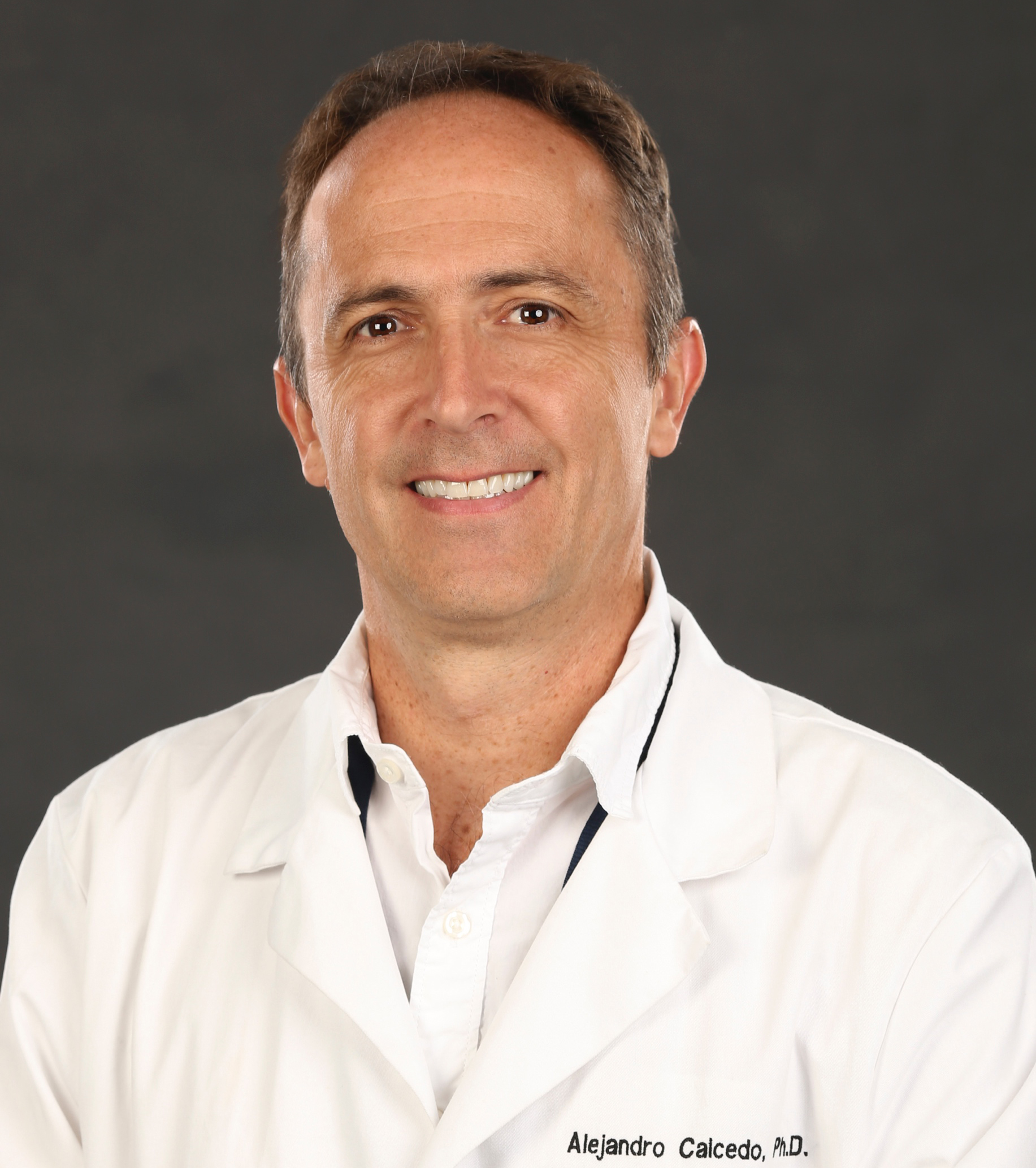Investigator Profile: Alejandro Caicedo

Projects:
•High-Resolution Characterization of Human Ductal Progenitor Cells and their
Regeneration Potential
•Real-time Detection of Insulin Surrogate Markers within Physiomimetic Islet Microsystems
►Where are you from originally, and where did you go to school?
I was born in a little village in Colombia to a German mother and a Colombian father, both artists who out of
necessity worked on my grandfather’s chicken farm. I spent my childhood and youth between Spain, Italy, Germany
and Colombia. I pursued my undergraduate studies in Germany, where I received my undergraduate degree in
animal physiology from the University of Tubingen. In 1997, I completed my doctoral studies in neurobiology at the
University of Montpellier, France. From 1997 to 2000, I received postdoctoral training from Stephen Roper at the
Miller School of Medicine, University of Miami, where I later joined the faculty. During my transition from the
neurosciences to islet and diabetes research my mentors were Per-Olof Berggren and Camillo Ricordi.
►What is your current position?
I am currently a professor of medicine at the University of Miami.
►Why did you decide to become a researcher?
Having artist parents, I may have decided to study biology out of teenage rebellion. But the virus of research really
infected me while I was working on my diploma thesis at the University of Tubingen. Not surprisingly, it was the
support of my mentors who made me believe that becoming a researcher could be a good life choice. I now see
science as a vocation.
►What is the “Big Picture” of what you study?
I am interested in the regulation of homeostasis, the process by which living organisms maintain their internal
environment. Homeostatic mechanisms support life by allowing our inner functions to resist the ever changing
environmental conditions. The regulation of glucose metabolism is a beautiful model of homeostatic control: it has
well defined components such as receptors (beta and alpha cells), a control center (the pancreatic islet) and
effectors (liver, muscles). In this circuit, blood sugar concentration is the regulated variable, a deceivingly simple
variable that, if not regulated within narrow limits, leads to diabetes. I study the biology of the pancreatic islet within
the frame of homeostatic control because it takes into account the complexity of living systems.
►What is your favorite aspect of your research?
This is a good time in history to be a biologist. As never before, we have powerful tools that allow us to visualize and
manipulate many aspects of biology at the cellular, tissular, and systemic level. I see myself as an empiricist who
loves to see how experimental results can reshape preconceived notions.
► What do you hope to achieve with your research?
I expect our research to produce a better understanding of how the pancreatic islet works and how it fails in
diabetes. In the long term, and working in collaboration with physicians, I anticipate the results to be translated into
clinical therapies.
|
► What groups are you involved with? I have a close relationship to my lab members, with whom I share life and research projects. On a larger scale, I am involved with the islet and diabetes research community. I am fortunate to meet many of my colleagues in several meetings over the years. Compared to other research communities, my impression is that our field is open and fair. ►When not in the lab what are your favorite hobbies/activities? Reading classics, playing soccer, and dancing, preferably to Latin music.
|
|


